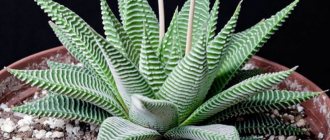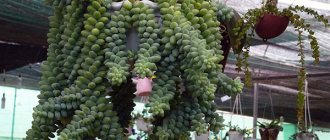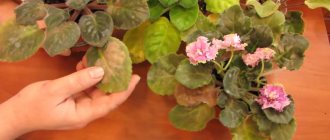When and why do babies appear on violet leaves?
Children appear on violet leaves during vegetative propagation. First, a healthy leaf without defects is cut from a Saintpaulia bush of the selected variety that produces a cutting. Then it is rooted immediately in the ground or in water.
In the first option, the cut leaf is placed 1-2 cm into the soil and wait for its root system to form. If the second method is chosen, then the cutting is placed in a small container of water, into which 1 tablet of activated carbon is added for disinfection. When the leaf sprouts roots, it is transplanted into a nutrient substrate. After some time, sprouts will appear from the base of the cutting.
Appearance and quantity
Baby violets are similar to adult plants, only miniature. The young leaves of the sprouts repeat the shape and color of the cuttings. Only variegated varieties can produce white rosettes, but as the plants grow, it changes to green.
The number of children depends on the characteristics of the mother's leaf itself and the care for it. A cutting can produce up to 10 rosettes. Sometimes only 1 sprout appears from the ground or no shoots are observed at all.
How long does it take to appear
After planting, the cuttings take root within 2-3 weeks. After the formation of the root system, you can expect the appearance of violet babies. This will take another 1.5-3 months.
If after 3 months the petiole has not produced children, then no offspring will appear from it. To speed up the appearance of rosettes, you can cut off a third of the mother sheet.
Propagation of violets using a leaf fragment
If you ordered some unusual variety of violet on the Internet, and the leaves arrived in the mail in a deplorable condition - frozen, rotten, broken in half, the stem rotted or broken off - do not be upset. After all, even a small but healthy part of the leaf is suitable for propagation. Every vein can give you children. Halves, quarters and even fragments of cuttings with one sq. take root well and produce offspring. cm leaf plate. Babies can appear from all the veins found in the substrate. They are, however, smaller and weaker than those children obtained in a different way. And they grow a little slower. Therefore, this method is used only when it is not possible to root a whole healthy leaf with a cutting, when you have no choice, and you are afraid of losing a rare variety that is special to you.
If you only have a rotten leaf, try to cut out the rotten area with a clean blade, touching the healthy part of the leaf. Wash the leaf in a solution of potassium permanganate to stop the rotting process. Now cut out fragments from the healthy part of the leaf blade so that the piece remains with a vein, albeit not a central one, but a lateral one, but this will be one of the conditions for successful rooting. It happens that leaf blades without cuttings, planted in this way, produce babies faster, and their number is greater.
How to cut out sheet fragments correctly
The main thing is to cut the violet leaf with a very clean and sharp blade or stationery knife. If there was rot on the leaf blade, the blade should be disinfected after each cut (for example, dipped in a glass with manganese or wiped with alcohol). All lines should, if possible, be carried out with minimal damage to the lateral veins.
You can divide the entire leaf into segments and plant each segment in a mini-greenhouse. Each segment will produce its own children - rosettes of leaves.
You can cut each leaf so that you first cut out the central vein, and then cut each half of the leaf into three parts. Each piece should have a side vein running from the central vein to the edge of the leaf.
You can cut two or three strips from the healthiest part of the leaf, each with two veins. There is a high probability that babies will appear from each vein of the leaf.
What to do if children grow slowly
After the Saintpaulia cuttings have sprouted, some rosettes immediately begin to grow, while others sit in the ground almost unchanged. There may be several reasons why children grow slowly. The main factors influencing the development of rosettes are considered to be an unsuitable microclimate, untimely watering, too much or insufficient irrigation, fertilizing and the condition of the root system of young Saintpaulias.
If optimal temperature conditions are created for the shoots, additional artificial lighting is used in winter, the most suitable watering method is selected, and the young rosettes still do not grow, fertilizer should be applied to the cuttings. For young Saintpaulia rosettes, choose fertilizing with a high nitrogen content. The concentration of the solution should be 8 times lower than for adult plants.
Important! The most effective way to speed up the growth of any plant is to replant it. In this case, it is recommended to replace the substrate. For this, a new soil is prepared, consisting of peat, perlite, moss and wood ash. It should be light, nutritious and breathable.
If replanting also does not produce results, transferring it to a larger pot will help. Sometimes the cutting sends out too many shoots and they become crowded. In addition, the grown mother leaf can block light from young shoots. It should be cut off a little on top, and then transplanted together with the children into a container with a large diameter. You need to make sure that the Saintpaulias do not end up in the depths of the pot. With high sides it will be difficult for violets to develop.
Reproduction of violets using stepsons
Sometimes, due to the high nitrogen content in the soil, small shoots appear in the axils of the violet leaves. These are the stepsons of the violet, in other words, daughter rosettes. Stepchildren spoil the appearance of the plant and are usually removed.
If you need this stepchild to propagate your violet, do so. Wait for four to five leaves to appear on the left stepson. Now that the stepson has become like a baby, it can be cut out from the mother’s rosette of leaves and rooted in a loose, damp substrate (wet sphagnum moss will do) in any container with a lid. After successful rooting, when the young rosette begins to grow, transplant it into your small pot according to all the rules. The whole process will take about two months. As a result, you will have a new varietal violet.
You can plant other stepsons in the same way. If they are not needed, remove them immediately so as not to spoil the decorative effect of your Saintpaulia. If necessary, plant them one by one as they grow.
How to seat children
To transplant young rosettes, the soil should not be wet, as there is a risk that heavy lumps of earth will tear off the thin and weak roots of the sprouts.
When separating the children from the cuttings, it may turn out that some rosettes have already formed a root system, while others have not yet had time to take root. They should not be thrown away. Such sprouts do not need to be separated; it is advisable to transplant them all together under a film. After some time, the shoots will take root, grow and cease to differ from their fellows.
If the cutting has only 1 child, you can plant the violet leaf along with it in another container without separating them. When the rosette grows, you should simply pinch off the leaf.
To properly separate the babies from the cuttings, you should take all the shoots in one hand and the mother leaf in the other. Then try to slowly and effortlessly separate them. After this, the sockets will easily fall apart from each other, and they can be transplanted into a separate container.
When to replant
When determining the time for separation of children from the mother leaf, the size and age of the shoots does not play a big role. Here, each variety has its own timing when replanting mature rosettes is allowed, and when you need to wait. The procedure can be carried out if the violet baby has several formed roots.
Most often, young rosettes are transplanted when they have sprouted 2-3 leaves and reached a height of 4-5 cm. Children of miniature Saintpaulias are planted later. If there is no risk of deformation of the rosettes through a large number of them, you can wait to separate them from the mother sheet for up to six months.
What to do with white kids
Children from variegated varieties often turn out completely white. There is no need to rush to transplant them. First you need to wait for the rosettes to grow a little and at least some of them acquire a green tint.
Only in this case can you separate the babies from the cuttings. If the white rosettes of Saintpaulia are taken from the mother leaf without waiting for changes, they will die.
Seating technology
The method of plant transplantation consists of the following algorithm of actions:
- Violets with already grown roots should be planted in separate containers.
- The substrate for transplantation is selected depending on the irrigation method used. For the wick method, it is recommended to prepare a soilless mixture. To prepare it, you need to take 1 part of sand and moss, 0.5 of charcoal and perlite, 2 of peat. If you plan to water from above, then the soil composition can be as follows: 1 part each of turf or leaf soil, moss, vermiculite and peat.
- To plant rosettes, the selected containers should be small - 5-6 cm in diameter. Disposable cups work great.
- It is first recommended to lay a drainage layer on their bottom. For this purpose, you can use crushed foam, broken brick, expanded clay or vermiculite. Sawdust is not suitable as drainage for Saintpaulias.
- Add a suitable substrate.
- All that remains is to place the children in prepared small cups.
After transplanting young rosettes, all containers with them are placed in a special polymer greenhouse or plastic bags with zippers. For ventilation, you need to make punctures in the cellophane or do not close the shelter tightly. You can purchase a greenhouse at a flower shop or use a food-grade plastic container with a lid for this purpose.
With regular moisture and fertilization, a healthy plant will grow. 7-10 days after separation of the violet babies from the leaf, they can be accustomed to the conditions of further existence. Periodically, you should open the greenhouse or cellophane and leave the sockets in this state for some time, gradually increasing its duration.
What to do if there are many children
If the cutting has produced a large number of children, you need to decide whether it is worth keeping them all. First you need to determine what variety the mother leaf belongs to. If it is a fancy violet that is a sporting violet, it is recommended that all rosettes be left. They need to be transplanted into separate containers and wait until flowering to select the required specimens.
If the Saintpaulia variety does not go into sport when using vegetative propagation, then the grower himself has the right to decide how many shoots to leave for further cultivation.
How to separate and plant large children
If the cuttings produce rosettes of unequal size, then first you can separate and replant only the larger specimens in a separate container. It is better to leave small sprouts near the mother leaf so that they grow and become stronger.
To separate larger rosettes, take the cuttings with the babies from the container, place the earthen ball with the leaves on a horizontal surface and carefully separate the selected shoots. Then we return the leaf with the remaining sprouts back to the pot, adding a little soil. We place large children in disposable plastic cups and place them in a greenhouse.
Propagation of violets using peduncles
Experienced flower growers and breeders propagate violets using this method. But for the propagation of violets - chimeras - this is almost the only possible option, since with other methods their decorative features are lost.
Select a blooming or already faded flower with large stipules from the mother bush. Don't take buds, they won't fit. Cut out the flower stalk with a clean, sharp blade or knife. Air dry for 10-15 minutes, treat the cut with crushed activated carbon. It is better to root in a greenhouse with high humidity. As a substrate, use a mixture of chopped sphagnum moss and perlite. You will see that the peduncle has taken root when a young rosette appears near the stipule. Wait a little until it develops well, only then can it be transplanted into a pot with Saintpaulia soil.
How to care for children
There are several rules for growing young Saintpaulia rosettes. These recommendations should be carefully followed, since the plant is considered quite capricious to care for.
Overfilling water is worse for children than not filling it enough. Excess moisture is fraught with rotting of the unformed root system of violets. Therefore, it is better to use a syringe or medical syringe to moisten the soil. Irrigation should be started only when the earthen ball on top dries out. When watering from above, you need to make sure that drops of moisture do not fall on the young leaves, otherwise brown spots will soon form in these places.
You can build wick irrigation, then the root system of the sprouts will absorb only the required amount of moisture. For irrigation, it is recommended to use melted, rain or settled tap water at room temperature.
The temperature in the room should be maintained at +22°C. It is not recommended to raise the parameter higher, as this will lead to a decrease in air humidity, which will immediately affect the condition of young Saintpaulias.
Young rosettes of violets are in dire need of good lighting, so in winter it is recommended to install an additional lighting source near the rack with them. Periodically, containers with Saintpaulia should be rotated so that the sun's rays fall on them evenly. This will help to form a bush of the correct shape.
Violets do not need to be fertilized for the first 3 months after transplanting into new soil. After this time, it will be possible to periodically apply fertilizer. It is advisable to use complex liquid preparations, strictly following the dosage.
To maintain optimal balance in the soil, it is recommended to alternate organic and mineral fertilizers. Before fertilizing, lightly moisten the soil so as not to burn the roots of the plant with the prepared solution.
Reasons for the absence of children
The reason why a violet leaf does not produce children may be due to the cuttings being planted too deeply. The shoots formed at its base simply cannot hatch through the thickness of the soil.
The problem of why cuttings do not produce children for a long time may also be hidden in the composition of the soil. The soil for vegetative propagation should be loose and breathable, then there is a greater chance that the leaf will sprout.
Sometimes flower growers decide to radically combat the problem of lack of offspring. If the children do not grow, what do they do: re-cut and root the mother leaf. The chances of success with this method increase significantly.











